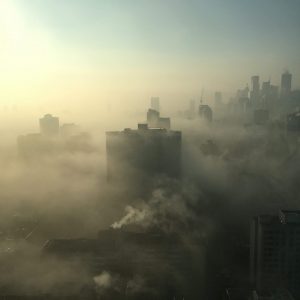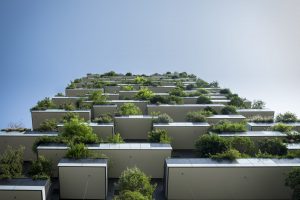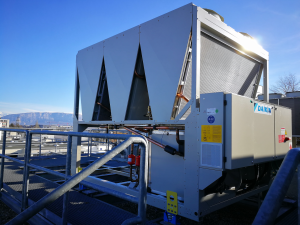Human activity is among the primary causes of the environmental issues we often hear about. Climate change, pollution, environmental degradation, resource depletion, those are all effects of activities that need to minimize their impact on the environment if we really want to preserve our planet.

Our daily use of natural resources and production of CO2 do not help solving the above-mentioned issues, instead they make them worse.
Even the way we build and maintain buildings have an important impact on the environment. In fact, the buildings’ sector impact on the environment goes beyond the construction material used. The water, energy, and resources that we use every day in those buildings do not only affect bills but also impact the environment.
That is why the building sector is considered a major contributor to global warming, for instance, as it is responsible for approximately 40% of energy consumption and 36% of the CO2 emissions in the EU.
In this context Green Building construction can help in reducing the impact the building sector has on the environment and all that goes with it.
Do you want to know more about Daikin solutions for Green Building? Check Daikin Free Cooling, R-32, and Inverter technologies.
What is a Green Building?

A Green Building is a building designed to minimize or even eliminate negative impacts on the environment, creating instead positive impacts, on climate, natural resources and overall quality of life.
So, it is the practice of constructing using processes that are resource-efficient and environmentally responsible through the entire life-cycle – from the design to construction, operation to maintenance, from renovation to deconstruction, and everything is in between.
Green Building certifications
But how can we assess a construction project's performance from a sustainability and environmental perspective?
The tools used to assess a construction project's performance and impact on the environment, are known as Green Building certifications. These certifications are fundamentally rating systems which aim to improve the overall quality of buildings and infrastructures.
The most popular building certification models today are BREEAM – largely used worldwide, with over 200,000 buildings certified and over a million registered for assessment – and LEED, which is especially popular the US but is rapidly spreading in the EU as well.
Benefits of Green Building Construction
With Green Building construction, not only the building sector has a way to minimize its impact on the environment reducing water waste, the use of natural resources, energy consumption, and then protecting biodiversity and ecosystems. There are also economic advantages associated with Green buildings that building owners can benefit from. Like the increased profitability in case of sale or rent, or operational costs reduction, which can help increase profit when renting.
Air conditioning technologies can impact the efficiency of a building
HVAC systems account for about 50% of the energy consumption in buildings in the European Union’s annual energy consumption.
More specifically, heating and cooling accounts for 13% of oil consumption and 59% of total EU gas consumption (direct use only). Although most of the energy currently consumed for these purposes is accounted for by heating, demand for cooling solutions is on the increase.
That clearly explains how HVAC systems can determine the way a building impacts the environment.
How Daikin can contribute to Green Building
That also mean HVAC systems can help minimizing the environmental impact of a building, though.

HVAC technologies are more than ever necessary since the cooling and heating needs of our world are growing. But while solutions of the past may have had consequences on today’s environment, the HVAC sector is now called upon to provide future-proof solutions to current challenges.
Daikin’s main goal is perfectly aligned to this need. Daikin is contributing to mitigating environmental impact with a comprehensive approach throughout refrigerant and equipment lifecycle.
That is proved by the fact that Daikin technologies for the Applied sector can significantly help getting a construction project Green Building certified. Here are the contribution areas for BREEAM certification:
- Energy: up to 7 credits with smart energy metering, Free Cooling and Inverter technologies.
- Management: up to 3 credits for taking advantage of the expertise of our BREEAM APs (accredited professionals) at Daikin
- Pollution: up to 4 credits with low impact refrigerants (R-32, R-1234ze or R-513A), plus the Leak Detection system.
and LEED certification:
- Energy & Atmosphere: up to 18 thanks to the incredibly high levels of efficiency offered by Daikin technologies.
- Innovation: up to 3 credits for choosing low impact refrigerants (R-32, R-1234ze or R-513A), exemplary performance exceeding the requirements for a given project, and for taking advantage of the expertise of our LEED APs (accredited professionals) at Daikin.
References
- https://ec.europa.eu/energy/en/topics/energy-efficiency/energy-performance-of-buildings/energy-performance-buildings-directive
- https://setis.ec.europa.eu/publications/setis-magazine/low-carbon-heating-cooling/ene-hvac-%E2%80%93-comprehensive-approach-hvac-system
Are you interested in Daikin solutions for Green Building? Then get in touch using the form below!
